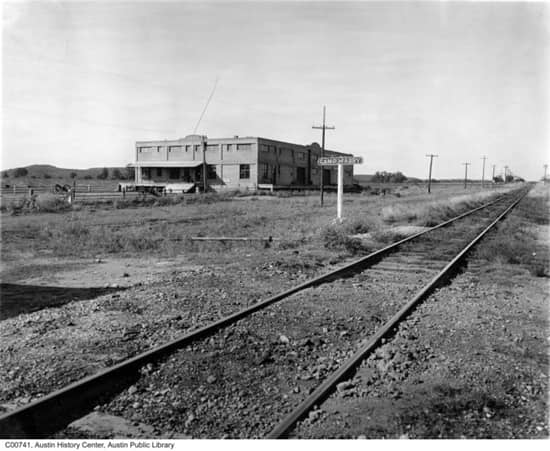A Brief History of the Texas Railroads
The geography of the massive state of Texas is incredibly diverse. There are mountains, winding rivers, scraggly desert, forests, elevations changes and more. With a maximum width of over 770 miles and a length of 800 miles it is an incredibly difficult state to travel without a proper means of conveyance. Today it is taken for granted that you can travel across the state of Texas in a matter of hours in a method of your choosing. Before railroads were laid down in the mid-19th century, travel in the area of Texas was limited to waterways and Native American paths and trails. Roads, where they existed, were of poor quality. Flood-prone rivers made crossing a challenge in the best of conditions. The majority of the population in Texas was clustered in the southern and eastern parts of the state around the 1830's, as the west was still considered too wild. However, as railroads became more widespread and necessary, travel to the western reaches of the state became a reality and led to rapid development throughout the region and beyond.

The Earliest Railroads in Texas
Before Texas became a state in 1845, the Republic of Texas was eager for railroads to be built, and as a result the Texas Congress chartered a railroad in 1836. Multiple railroad companies were formed, but although they raised significant capital towards construction, they didn't actually complete a railroad line. It was not until 1853 that General Sidney Sherman planned, built and opened a 20-mile segment of railroad from Stafford to Houston, called the Buffalo Bayou, Brazos and Colorado Railway, Texas' first official railroad. Eight years later, at the start of the Civil War, there were approximately 470 miles of railway in Texas. Most of these rail lines were located in and around the area of Houston, linking the city to Galveston and the Gulf of Mexico.
Rail Expansion and the Birth of Urban Texas
A vital trade link from the Gulf into Houston and to points beyond helped drive the urbanization of eastern Texas. The 1860s didn't see much development, with the Civil War and the general lawlessness of the frontier part of Texas prohibiting construction but by 1872, the Texas railways were linking up with the national grid in the form of the Missouri, Kansas and Texas Railway Company. The Houston and Texas Central Railroad Company provided a link to Dallas and beyond the state's borders into Oklahoma territory. These vital railroad links, combined with advances in manufacturing brought on by the Industrial Revolution, led to rapid expansion of Houston and Dallas. Although there were 2,440 miles of railway in Texas by the end of the 1870s, most of these rail lines were concentrated in the eastern half of the state. But, that was soon to change.
Rail Consolidation and the Race Across the Continent
As the railroads grew larger and stretched farther, the companies that oversaw them grew bigger. By the 1880s larger companies like Southern Pacific were in control of most of the Texas lines. As the race to complete a transcontinental railway heated up, many companies invested heavily in railroads and bought out existing interests in Texas. While the increase in capital was beneficial in the short term, these few national railroad interests soon developed a monopoly of sorts on the industry and began price-gouging, among other crimes and complaints. The notorious railroad baron Jay Gould was responsible for some of these shady practices, as he took over a large portion of the state's railroads in the 1880s. The Texas Railroad Commission was established in 1892 to control and regulate the railway industry and ensure fair practices. The Railroad Commission was not only in charge of railroads and transportation but eventually all oil and gas industry as well. Today, the TRRC no longer controls the railways but maintains the infrastructure for oil, natural gas, water, and energy.
Closing the West and Retiring the Rails
The final railway connections to the corners of Texas were made around the turn of the 20th century. Some areas of the state, particularly the panhandle and Rio Grande Valley, were still considered frontier and made railroad investors nervous. But as law and order was brought to the land, the railroads followed, and after that the population grew as well. In addition to reaching all corners of the state, larger eastern cities like Dallas and Houston also developed local rail networks to connect suburban commuters to the city center. Streetcars and electric rail services were also popular through the first half of the 20th century. However, as mass-produced automobiles became cheaper and interstate highways became popular in the 1950s, the expansion of railways slowed considerably. Nowadays, railroads are mostly used for moving cargo and freight or the occasional Amtrak journey.
New Horizons
Despite the dominance of automobiles, railways still have an important role to play in the economy of Texas. Texas still boasts the highest number of rail employees and the longest railway distance of any state. Much of the crude oil in Texas is transported by rail to refineries in Houston and elsewhere, fueling the lifeblood of the economy. Without these vital rail links established over 150 years ago, much of American industry would falter.
Additional Resources
By: Jim Olenbush
